Writer’s note: Amazon’s fall Prime Day event will kick off on October 8th and run through the 9th, but we’re already starting to see some good deals trickle in. We’ve rounded up the best early Prime Day deals here, and will add any robovac deals we see as they roll in.
Technology
NYT Mini Crossword today: puzzle answers for Saturday, October 5
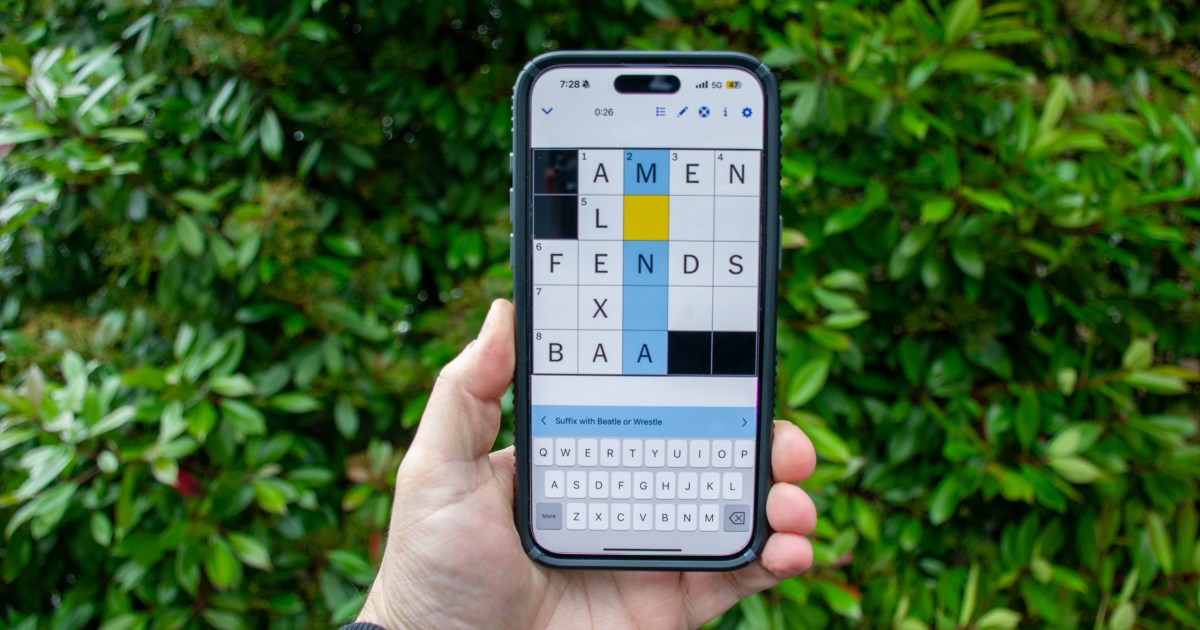

The New York Times has introduced the next title coming to its Games catalog following Wordle’s continued success — and it’s all about math. Digits has players adding, subtracting, multiplying, and dividing numbers. You can play its beta for free online right now.
In Digits, players are presented with a target number that they need to match. Players are given six numbers and have the ability to add, subtract, multiply, or divide them to get as close to the target as they can. Not every number needs to be used, though, so this game should put your math skills to the test as you combine numbers and try to make the right equations to get as close to the target number as possible.
Players will get a five-star rating if they match the target number exactly, a three-star rating if they get within 10 of the target, and a one-star rating if they can get within 25 of the target number. Currently, players are also able to access five different puzzles with increasingly larger numbers as well. I solved today’s puzzle and found it to be an enjoyable number-based game that should appeal to inquisitive minds that like puzzle games such as Threes or other The New York Times titles like Wordle and Spelling Bee.
In an article unveiling Digits and detailing The New York Time Games team’s process to game development, The Times says the team will use this free beta to fix bugs and assess if it’s worth moving into a more active development phase “where the game is coded and the designs are finalized.” So play Digits while you can, as The New York Times may move on from the project if it doesn’t get the response it is hoping for.
Digits’ beta is available to play for free now on The New York Times Games’ website
Technology
Google Search results getting verified blue ticks, starting with businesses
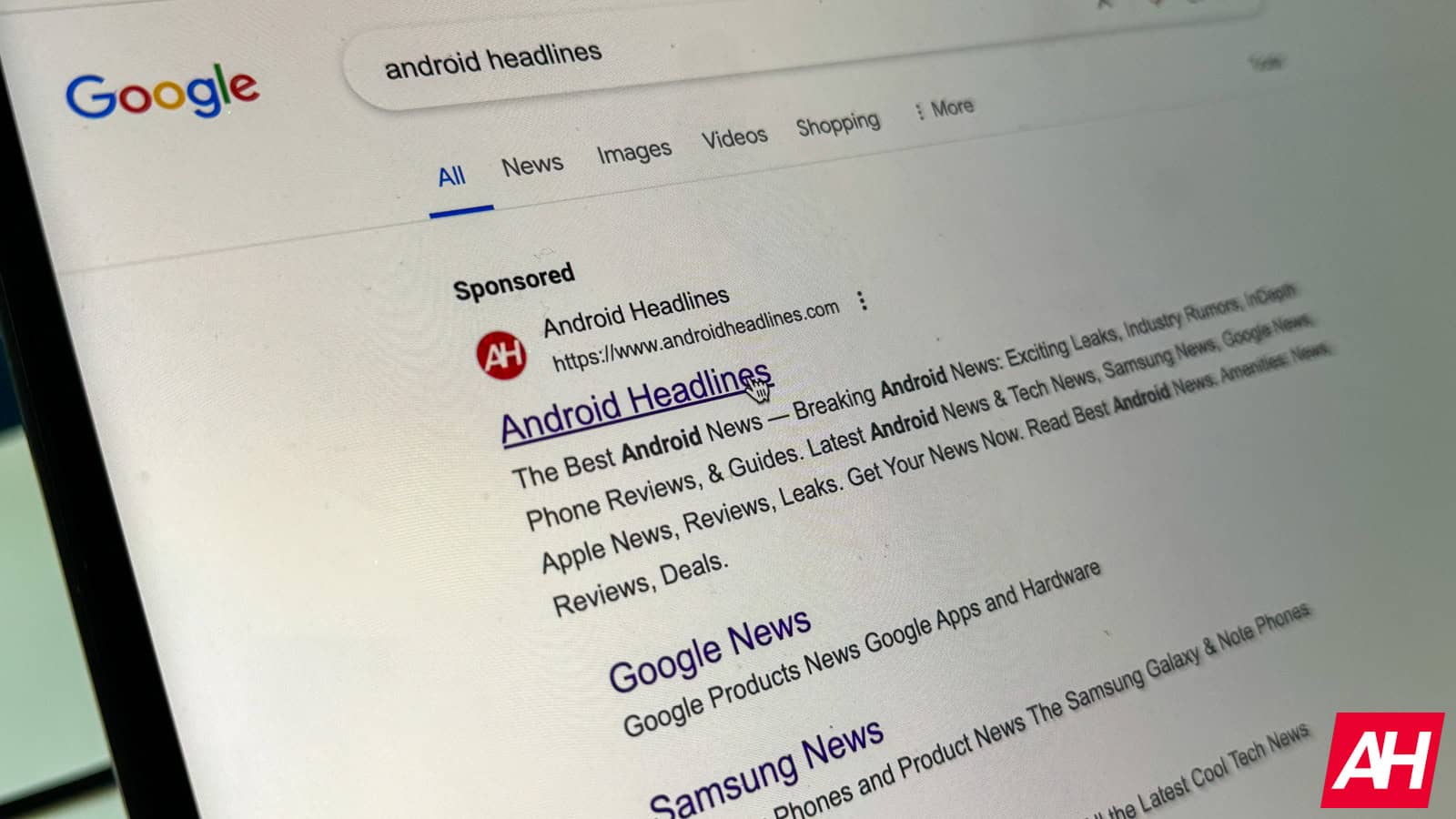
Google Search results appear to be showing a blue tick for a few “verified” links. If done right, the new verification feature could help in avoiding phishing or fraudulent websites.
Some Google Search users see results having verified checkmarks
Google Search is by far the most used search engine. It serves billions of search results every day. Hence, it is one of the most preferred platforms for inserting authentic-looking websites with nefarious intent.
Google routinely tests multiple features, including techniques to address the growing menace of phishing websites. The company even tried to promote genuine web links for verified brands.
Google has now begun amending some Google Search results with a blue tick that implies it is a “verified” link. The search giant is reportedly experimenting with a new verification feature in search results. Google public affairs spokesperson Molly Shaheen has confirmed the company is testing the new feature.
“We regularly experiment with features that help shoppers identify trustworthy businesses online, and we are currently running a small experiment showing checkmarks next to certain businesses on Google.”
What does the blue tick denote in Google Search?
Some users are starting to see a blue verification checkmark next to business links in their Google Search results. Specifically speaking, the blue tick is visible alongside weblinks of official sites for Microsoft, Meta, Epic Games, Apple, Amazon, and HP.
It is important to note that Google has just started testing the new feature to denote a verified weblink. Moreover, the company has limited the test to a few businesses. Interestingly, switching a Google account reportedly causes the blue tick to disappear, which further confirms the feature is in its early stages of testing.
Hovering over the blue tick reveals a box with a message that reads, “Google’s signals suggest that this business is the business that it says it is. Google can’t guarantee the reliability of this business or its products.”
It is not immediately clear, but Google could be referring to common markers for authenticity such as website verification, Merchant Center data, and manual reviews. These checkmarks may also be an extension of the Brand Indicators for Message Identification (BIMI). Google has been using these markers in Gmail for popular and well-established brands.
Since the feature is being tested, it would be difficult to comment on its effectiveness. However, Google could easily ruin the search experience if it just started handing out the blue tick of verification to anyone willing to pay the company.
Servers computers
1U 19'' Horizontal Cable Managers for Ethernet Cabling | QSFPTEK
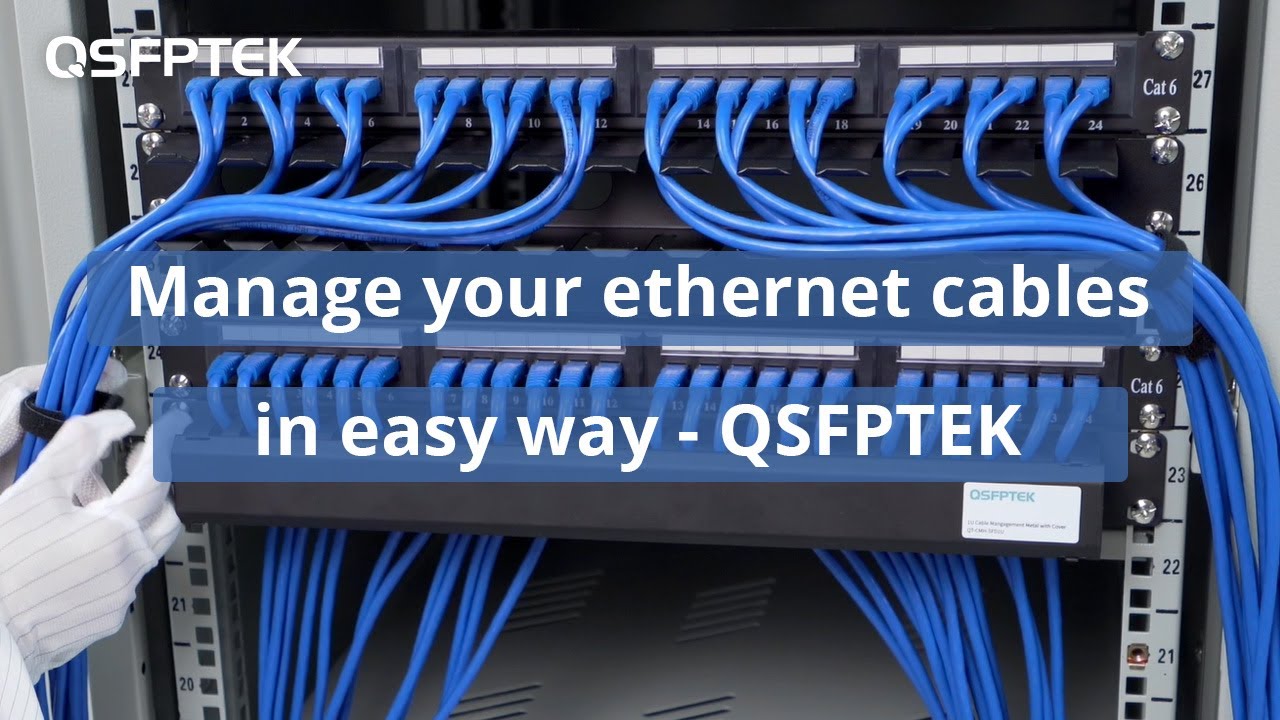
This video shows how the 1U Horizontal Cable Managers allow efficient management of ethernet cables in the cabinet.
The horizontal cable management is specially designed with 12 finger ducts on each side, which enables to route in and out cable from both the rack front and back. This design construction ensures control of the bend radius to the utmost to reduce cable wear. It also features a removable dual-hanged top cover, which provides flexibility to adjust cable bundles from the panel and offers a neat professional look. Metal cable organizer ensures high durability compared to the plastic cable panel.
You learn more about this cable manager on: https://www.qsfptek.com/cable-management .
source
Technology
LG C4 OLED smart TVs hit record-low prices ahead of Prime Day
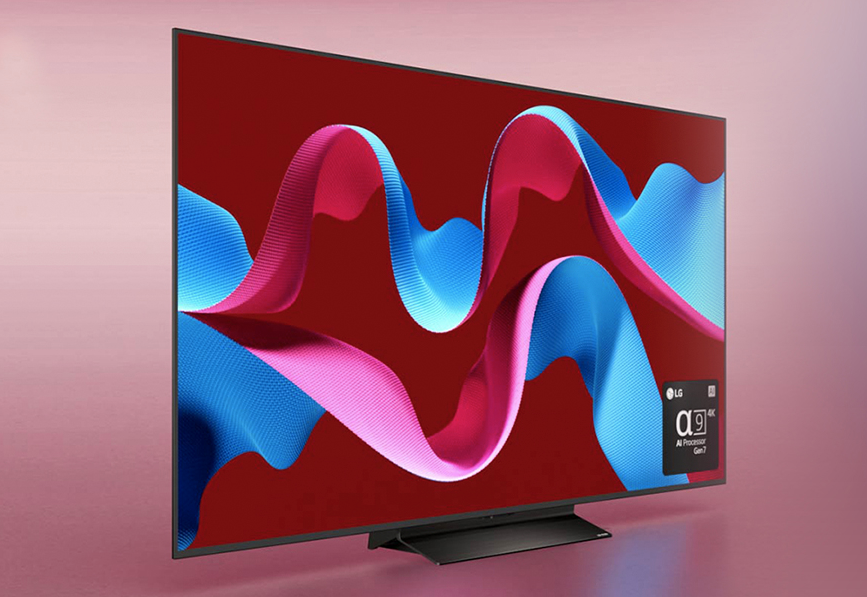
Amazon Prime Day will be here in a few days, and we’re seeing a health number of early deals available right now. While we expect to see better TV deals closer to Black Friday, a few decent ones have dropped on LG’s C4 OLED smart TVs. The 55-inch version is just $1,297, which is nearly $700 off, and you’ll find discounts of hundreds of dollars off on most other sizes.
This is the company’s mid-grade line of OLED TVs. Each model includes the updated Alpha 9 Gen 7 chip, which makes menu navigation much snappier. They also boast improved brightness when compared to previous models. These TVs almost hit 1,000 nits of brightness, which is a little dimmer than a Mini LED panel but better than many OLEDs.
There’s a maximum refresh rate of 144Hz, which is perfect for gaming. To that end, these sets are compatible with G-Sync and AMD Freesync. The PC gaming bona-fides are strong with this one.
One of the cool features of this smart TV is enhanced compatibility with LG soundbars. Newly-released soundbars will connect wirelessly to the television, clearing away the endless clutter of cables from the living room.
The 65-inch model is also on sale for $1,697, which is a discount of over $1,000. For the big spenders, the massive 83-inch version is available for $4,297. This is 20 percent off the typical price.
Follow @EngadgetDeals on Twitter for the latest tech deals and buying advice, and stay tuned to Engadget.com for all of the best tech deals coming out of October Prime Day 2024.
Servers computers
Onix Solution – Rack 8U indoor (LINHA STRONG)
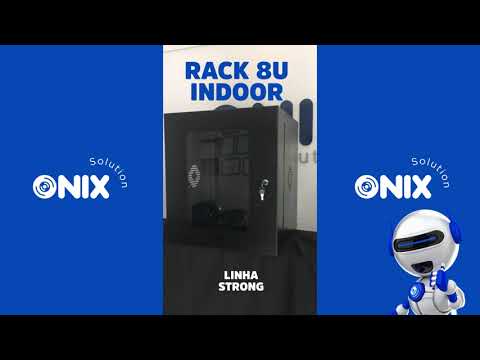
Contatos Onix Solution:
Site: https://onixsolution.com.br
Facebook: https://www.facebook.com/produtosonix
Twitter: https://twitter.com/onixsolutionbr
Linkedin: https://www.linkedin.com/company/onix-security-industria
Contato: (17) 3500-7777
sac@onixsecurity.com.br
Vídeo: .
source
Technology
CleanPlay aims to reduce carbon footprint of gaming | The DeanBeat
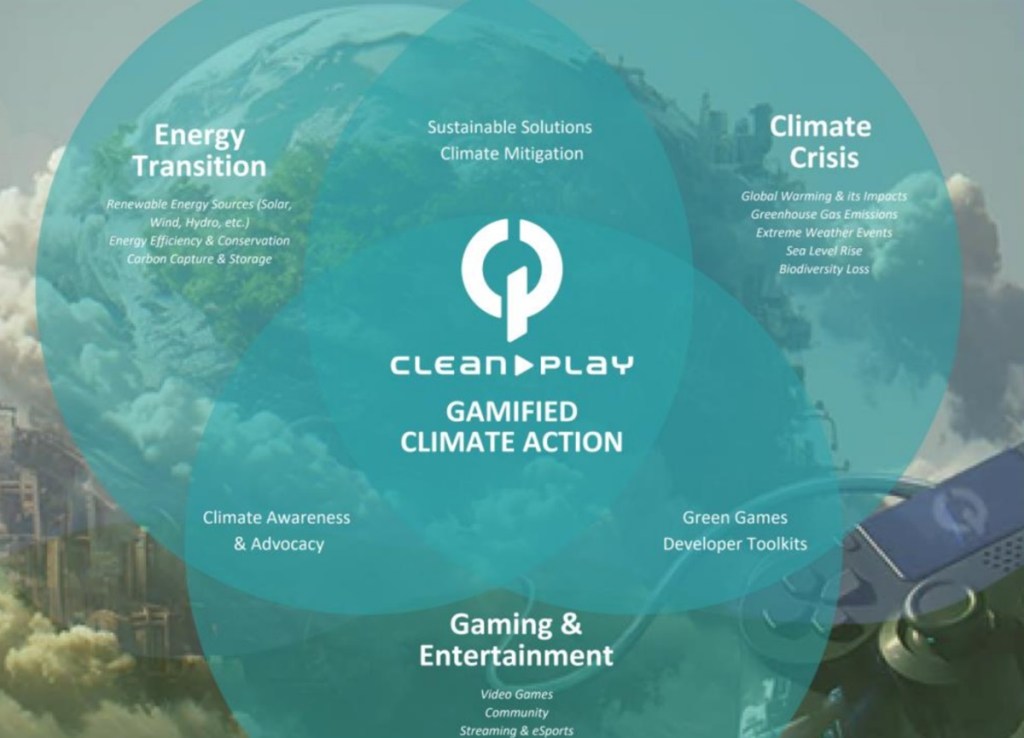
Rich Hilleman and David Helgason have helped shape the video game industry. Now they want to offset its environmental impact with CleanPlay.
More than just a startup, CleanPlay is on a mission to rapidly and dramatically reduce the carbon footprint of the video game industry. Hilleman is the former chief creative officer at Electronic Arts, while Helgason was the former CEO and cofounder of the Unity game engine.
They said they have seen gaming evolve over 30 years from a geeky hobby into one of the largest communities on the planet. Today the community of gaming is vast, diverse, and a wonderful space where the connections between creators and players extend far beyond entertainment.
In parallel, climate change has emerged as the defining challenge of our era, impacting every person on earth – gamers and non-gamers alike, they said.
Join us for GamesBeat Next!
GamesBeat Next is almost here! GB Next is the premier event for product leaders and leadership in the gaming industry. Coming up October 28th and 29th, join fellow leaders and amazing speakers like Matthew Bromberg (CEO Unity), Amy Hennig (Co-President of New Media Skydance Games), Laura Naviaux Sturr (GM Operations Amazon Games), Amir Satvat (Business Development Director Tencent), and so many others. See the full speaker list and register here.
“We embarked on a journey to understand the intersection of climate and gaming, delving into the CO2 emissions of the videogames industry. Although gaming is relatively low in carbon intensity compared to revenue, its total emissions are significant and growing,” Hilleman and Helgason said.
Current estimates suggest that the gaming industry is nearing 100 million metric tons of CO2 emissions annually, roughly equivalent to the emissions from 20 million passenger cars or deforestation of 80,000 square miles (nearly Great Britain’s size). Notably, 80% of console emissions come from players’ electricity consumption, with gaming making up 1% of U.S. household energy consumption.
How CleanPlay works

That’s where CleanPlay comes in. CleanPlay empowers players to take simple and immediate climate action while enjoying their favorite games – and to get rewarded in the process.
Partnering with game developers, publishers, and platform holders, CleanPlay is inviting the majority of gamers who already feel a personal responsibility to combat climate change to join the cause. Through the CleanPlay app – launching first on PlayStation 5 – CleanPlay aims to ensure that every watt of energy used while gaming is matched with clean energy.
The company is using verified tools today and it is also engaging the community to pursue even more impactful solutions for reducing CO2 emissions and driving the clean energy transition in gaming.
As the gaming industry continues to expand, the energy demand will be far greater than most anticipate in the coming years. That’s why ensuring the quality and integrity of the clean energy solution is CleanPlay’s top priority.
The company is working closely with sustainability experts to carefully select clean energy projects that not only meet this growing demand but also make a real impact on driving clean energy adoption.
Transparency and rigorous tracking are embedded in every step the company takes, ensuring that CleanPlay’s contributions to clean energy are both meaningful and measurable, the company said.
Moreover, CleanPlay offers a way to transform sustainability efforts into a revenue-generating opportunity for gaming companies. The platform empowers entire teams – from game designers, developers, and publishers to financial and sustainability leaders – to seamlessly integrate clean energy into their operations, creating an economically rewarding model that offers new monetization opportunities, enhanced player engagement, and increased loyalty.
By incorporating in-game features and reward systems tied to clean energy actions, we’re delivering value that resonates with eco-conscious gamers and helping industry partners realign their strategies, ultimately turning environmental action into a powerful driver of profitability and long-term success.
The gaming community, with its proactive, passionate, and agile members, is ideal to lead the charge in community-driven demand for CO2 reductions, and will create a roadmap for other industries to rapidly improve, CleanPay said.
Activities
Gamers can engage in up to 1,000 hours of eco-conscious play, annually, matched by clean energy. The gamers can also access to hand-picked gaming premiums, enhancing playing experience with exceptional content. They can also connect with like-minded players at exclusive community events, designed to unite and inspire.
Gamers can also join influencer sessions led by prominent gaming influencers, offering unique gameplay experiences and insider tips. And they can get exclusive offers on games and content, benefiting from special offers tailored to support sustainable gaming practices.
Right now, only about 20% of electricity generated in the U.S. comes from renewable sources. That’s not enough, CleanPlay said.
“We are focused on increasing the proportion of clean energy on the grid, and we’re looking to drive real impact through the gaming community,” CleanPlay said. “At launch, we’re starting by purchasing high-integrity Renewable Energy Certificates (RECs) while exploring options like Virtual Power Purchase Agreements (VPPAs), community solar subscriptions, and direct investment into new projects and technologies (we like thinking about tidal energy, hydrogen fuel cells, and nuclear fusion, don’t you?). We also support efforts like 24/7 accounting and granular certificates.”
Origins

Helgason was the former CEO and cofounder of Unity, the game engine company. He started it in 2004 and focused on making a game engine for mobile games, expanding it later on to compete head-on with Epic Games’ Unreal engine. He stepped aside as CEO in 2014.
The firm went public in the go-go pre-pandemic days in 2020 at a valuation of $13.7 billion, and Helgason became wealthy. He started a venture fund in 2021.
“As you know, I used to be quite active in the games industry, but then years ago, I decided to spend most of my energy on cleantech,” said Helgason, in an interview with GamesBeat. “I’ve been investing into technology solutions for many years, both software and hardware, into synthetic biology and batteries and all this stuff. That’s really fun.”
But he also saw playing games as part of the problem, as game consoles, PCs, and mobile devices all use energy.
“It occured to me that we could harness that somehow, to be part of a solution,” Helgason said.
He connected with Hilleman, who had spent decades at Electronic Arts building franchises like Madden NFL Football and EA Sports. Hilleman joined EA in 1982 as employee No. 39. Hilleman eventually became chief creative officer of EA, and he retired in 2016. He took an interest in clean energy and started designing electric cars for racing such as the Blackbird.
“When David gave me the challenge, the part that got me interested was not solving the carbon footprint for the business. That’s a relevant thing, but it was providing leverage to show other businesses how to do it, how to involve their customers in the process, how to use the kind of techniques that we’re going to use to reward them for the things that they do right, have it to inform them when they’re not,” Hilleman said. “The real opportunity here, one of the most powerful things that we have found, is that the clean power industry has an excess of capacity that they’re having a hard time delivering to the extent that they’re paying three and four figure fees to get access to customers with any hope of closing them.”
Helgason caught up with his mentor Hilleman during the spring of 2021. Hilleman was busy designing four different EV race cars. But Helgason waited until the off season and they brainstormed again.
“Rich was a systemic thinker,” Helgason said. “The publishers were starting to talk about having goals” for the environment. One paper written around the time was about how to optimize code for power utilization on an Xbox game console. Microsoft did a similar paper about running the game Halo.
“Once I had those numbers, I could start to really figure out what the real problem was,” Helgason said, at least as far as the consoles go. Given the consumption numbers, Helgason realized that the efforts of the publishers and players weren’t really addressing the real environmental problems. he called a friend at Sony and started thinking about it more.
A big idea

He thought that the platform company should sell carbon mitigation as part of the company’s primary subscription for online play for the game console.
“That’s where the notion came — which is, hey, why don’t we be in that business? And why don’t we be in that business in a way that’s more imaginative than a console player can be, and that we can extend it with other platforms,” Helgason said.
“Our goal is to meet the need, put it on whatever platform, in an appropriate way. We’re starting on the console first because we have three really variable characters,” Hilleman said.
He noted that PCs may run on as low as 35 watts (or up to 400 for a gamer PC) while consoles were running on 200 watts. The team of a few people created an application with the option to purchase carbon-free energy for your game console.
“We purchase carbon free energy in some fashion and add it to the grid. The effect of that is to try to erase the carbon footprint of that particular individual once they’ve made that choice, then we try to share a couple of key pieces of information with them,” Hilleman said. “We have a reasonable model. This is the second positive characteristic of consoles — they’re very homogeneous, meaning they’re all the same, all about the same power profile, which makes all of that stuff easy to model and predict, because we currently do not have on platform metering.”
So CleanPlay can inform a player of their power consumption and how much of it is being offset. Players have options like buying a renewable energy certificate that supports clean energy power plants.
A subscription service

The subscription price isn’t set yet, but Hilleman believes it will be under $20. As for cloud games, much of the computing and electricity is used in internet-connected data centers. Big cloud providers like Amazon, Google and Microsoft are offering aggressive plans to rein in their power requirements.
Hilleman said he wishes every party involved in power usage, from AI companies on down, would to a better job of understanding and disclosing their power utilization. Since that isn’t happening, customers have no idea how much power they’re using. If they did, they might make different choices, Hilleman said.
“That’s the core of what we’re about,” Hilleman said. “We see all of the platforms (for power usage) as an opportunity. The key thing that I think distinguishes us from the other people in the space is that we think customers want to be a part of it, and we think that if we give them that choice, that they’re not only going to take it, but they’re going to make us smarter by it.”
Hilleman hopes he can get 10% of video game players to join the cause, and that could actually mitigate the entire carbon footprint of the game business, he said. Gamers can be part of the solution, but so far they have never been asked to help, he said. Hilleman said he appreciates the efforts on every side where game companies and gamers are trying to go green, but he worries the effort is too small.
“Nobody should be pointing fingers at anyone else,” Hilleman said.
Hilleman thinks that measurement of energy consumption, and showing how it’s changing, will be important in convincing gamers to stay the course, as it will cost them money. But Hilleman also believes it’s important to incentivize people by giving them gifts. Those can come from publishers.
The application for the consoles is done. It’s possible for the company to ship this year. As for Unity, Helgason hopes game engines can be part of the solution in the future by making it easier to do metering of electricity usage while gaming.
Source link
Technology
The best budget robot vacuums for 2024
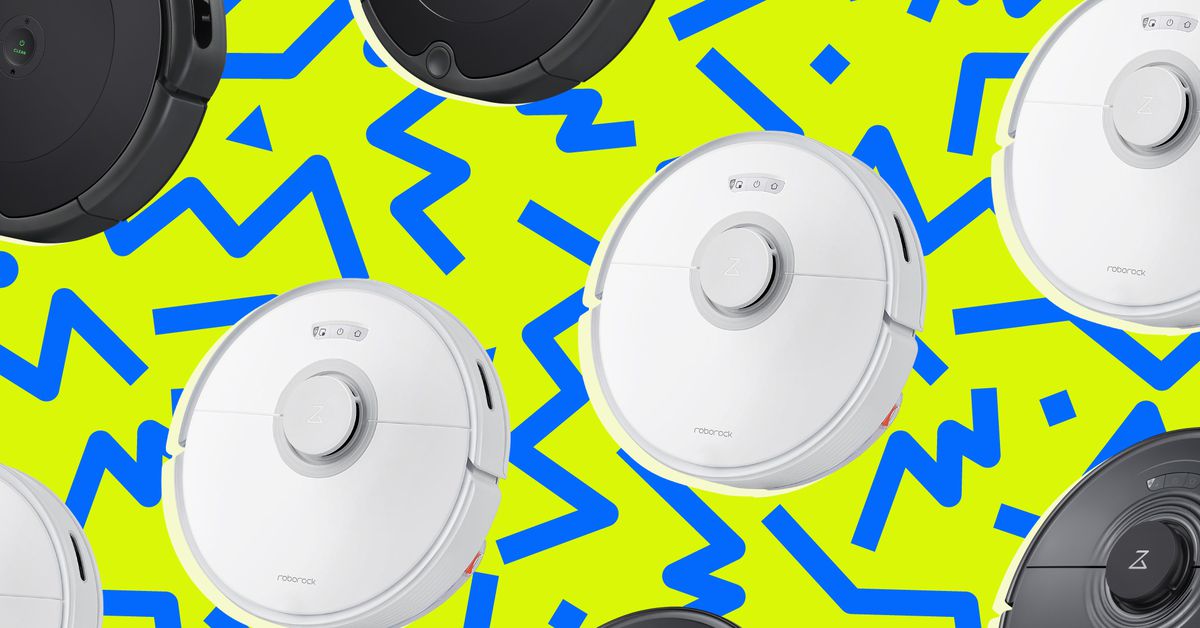
Today’s robot vacuums are becoming a bit like cars: with all the features, upgrades, and fancy trimmings available these days, it’s easy to forget that they can just be simple machines that get us from point A to point B. Yes, some bots blow hot air on their bums (mop pads) and deftly navigate dog poop, but there are plenty of basic budget robot vacuums that just do a decent job of cleaning your floor autonomously — as long as you tidy up first.
While higher-priced, higher-powered robot vacuums clean better, budget bots do a perfectly good job, especially if you run them regularly. The biggest downside of cheaper models is they get stuck on cables, socks, shoelaces, and other paraphernalia you leave lying around. If you’re home and can untangle it, great, but if you’re not, then it will just sit there stuck until its battery dies, and you have to charge it up again before it will clean your floors.
Fancier models have obstacle recognition, and some even use AI-powered cameras to tell popcorn from poop and avoid the latter. If you want one of those, check out my Best Robot Vacuum buying guide. But if you think you can manage the task of picking up after yourself (and your puppy), a budget bot will save you a lot of money and still do a good job cleaning your floor.
Here’s a list of my favorite robot vacuums that don’t cost a fortune and will still get the job done.
Best budget robot vacuum
The Roomba i4 Evo robot vacuum (the Roomba i3 by another name and with a bigger battery) cleans just as well as the flagship Roomba j7 and can map your house for more accurate vacuuming. But there’s no AI-powered obstacle avoidance or virtual keep-out zones, so you do have to clean up your clutter before you run it.
Suction power: unknown / Dustbin capacity: 419ml / Runtime: 90 minutes / Brush style: dual rubber / Auto-empty dock option: yes / Mopping option: no / Mapping: yes / Keep-out zones: physical only / Works with: Amazon Alexa, Google Home, Siri Shortcuts
The Roomba i3 Evo isn’t the cheapest robot on the block, but its cleaning chops, attractive design, superb software, and robust, easily-repairable hardware make it the best choice for spending a smaller budget.
The i3 cleans almost as well as iRobot’s higher-end j7 but for a lot less. While it has slightly lower suction power, it has Roomba’s signature dual roller rubber brushes, which do an excellent job of removing pet hair from hardwood floors and sucking up oatmeal from plush carpets. It doesn’t have the AI-powered obstacle avoidance of the j7 (which knows the difference between poop and popcorn), but that’s not a feature you’ll find on any budget bot.
What the i3 does have is mapping and room-specific cleaning, so you can send it to clean the kitchen if you want. Only a handful of the budget bot features mapping, and Roomba’s maps are some of the best in my experience, mainly because they rarely have to be rebuilt.
The biggest negative here is there are no virtual keep-out zones. If you have somewhere you don’t want the bot to roam, you’ll need to buy one of iRobot’s virtual wall towers. It also has a relatively small bin, but you can pair it with an auto-empty base (although that increases the cost substantially).
The i3 is a solid vacuum with big wheels that can easily tackle any floor surface you throw at it, managing most transitions. But it does tend to bump into things, resulting in a few toppled chairs during testing. This means it gets almost everywhere you want it to and won’t be put off by a bed skirt. But if you have delicate items on rickety tables, watch out.
As with all Roombas, the i3 is easy to self-repair, and you can buy (not inexpensive) replacements for all its parts. I’ve actually rebuilt one after it rolled over some dog poop. It’s worth noting that the Roomba i4 is essentially the same robot vacuum as the i3 Evo, so pick up whichever offers the best price.
As of last year, iRobot also offers the Combo i5 for $349.99, which adds the option of basic mopping and a smaller auto-empty dock if you go with the i5 Combo i5 Plus version. I’m currently testing this model, but it has largely the same features as the i3 and is a good option if you can’t find the i3 in stock.
More expensive but with a bigger bin
The Q5 Pro has a big 770ml bin, 5,500Pa of suction power, and can be paired with an auto-empty dock, making it a great budget option when it’s on sale. It also mops with a removable mopping pad with a small built-in water tank. It has dual rubber brushes, lidar mapping, and keep-out zones, and the app is very good.
Best basic bump-and-roll bot
Suction power: unknown / Dustbin capacity: 425ml / Runtime: 120 mins / Brush style: single bristle / rubber hybrid / Auto-empty dock option: no / Mapping: no / Keep-out zones: no / Works with: Amazon Alexa, Google Home
The Shark Ion’s big bin, simple app experience, decent battery life, repairability, and bullish nature make this an excellent bump-and-roll bot. That is a robot that doesn’t map or have any special navigation features other than colliding with things and changing direction. It’s not fancy, but it gets the job done.
It’s a good one to stick under a bed or desk and set to run when you’re not home, as it’s loud and rattly and will bang into everything in its path. But its big wheels and 120-minute runtime mean it’s less prone to getting stuck or running out of juice than simpler $100 bots.
Unlike many budget bots, it uses a hybrid roller brush that’s both bristle and plastic and doesn’t get as tangled as standard bristle brushes. Its short, squat side brushes are surprisingly effective at getting debris into the robot’s path, and because they’re short, they’re less prone to getting tangled in stray cords.
But the best thing ‘bout this bot is its tank-like wheels that will roll right over anything in its path, including high transitions between rooms, obstacles like lounger chair legs, and other furniture traps that regularly stump other bots. That’s a good thing, as there’s no mapping, obstacle detection, or any way to set keep-out zones here. This bot just goes.
Another bonus: replacement parts are easily available, making this more repairable than most non-Roombas.
Shark doesn’t share suction power specs, but it ably handled all my tests, including the toughest: raw oatmeal. Those little flakes are hard to pick up; side brushes will spin them all over the floor. It did a good job on pet hair, too, although, like most robots I tested, it required at least two runs to get everything up effectively.
The app is super basic: just on / off, basic scheduling, and a choice of three power levels (all loud). Disappointingly, you can only schedule it once a day. Most robots can be programmed to do two to three passes, but in place of that, I like the option to schedule it to go out twice to make sure it gets the job done. I couldn’t do that with the Shark. Still, you can press its button or use the app to send it out again if needed.
Best budget robot vacuum and mop
Suction power: 4,000Pa / Dustbin capacity: 400ml / Runtime: 180 mins / Brush style: single bristle / rubber hybrid / Auto-empty dock option: yes / Mapping: yes, plus lidar navigation / Keep-out zones: yes, virtual / Works with: Amazon Alexa, Google Home
The midrange Dreametech D10 Plus is one of the few bots you’ll find that mops, maps, and auto-empties for $400 or less. I like its more compact auto-empty station, which helps compensate for its small 400ml bin.
Decent suction and a rubber / bristle hybrid brush provide a good clean, but it’s nowhere near as effective as the Roomba i3 Evo with its dual rubber rollers.
The big selling point here is that the Dreame does have lidar navigation and mapping to allow for room-specific cleaning with keep-out zones. Keep-out zones are handy for ensuring the robot finishes the job; if it gets stuck somewhere regularly, you can tell it to avoid that spot.
The Dreame has no-mopping zones in the app, and you can also remove the mop before you send it out. The Dreame did a good job navigating my complicated second floor, and while it’s quite a burly bot, it still fit under most furniture and handled transitions well.
A better mopper but more work
The Shark Matrix Plus 2-in-1 Robot Vacuum and Mop mops very well — doing a swingy, scrubbing movement with its rear end when in “Matrix mode.” However, you have to manually fill and attach the mop reservoir and empty the bin when it mops, as it only self-empties in vacuum mode and can only avoid larger objects.
Best self-cleaning, self-emptying robot vacuum / mop under $500
Suction power: 5,100Pa / Dustbin capacity: 360ml / Runtime: 180 mins / Brush style: single bristle / rubber hybrid / Auto-empty dock option: yes / Mapping: yes, plus lidar navigation / Keep-out zones: yes, virtual / Works with: Amazon Alexa, Google Home
The Yeedi Cube is the least expensive robot vacuum that has the same kind of multifunction dock and high-end features as robots over $1,000. It also has obstacle avoidance tech, although, unlike the pricier bots, it uses lasers to see objects, not an AI-powered camera. This is less effective but more avoidance than any other bot in this roundup offers. While it originally retailed for $699.99, it can often be found on sale for less than $500.
The Yeedi resembles the Roomba in its full-speed-ahead nature. It will just run into things, and if it can clean them, great! It also only goes around larger objects. So while it ably sucked up Cheerios and picked up all the oatmeal flakes, it got stuck on cords and socks. Definitely keep it away from pet waste.
The Yeedi’s mopping prowess is impressive. It scrubs the floor using a thin microfiber cloth that vibrates 2,500 times a minute to get up grime, similar to the Roborock S8. The dock cleans the mopping pad, drains the dirty water, and auto empties the bin, but the robot carries its one-liter water tank around on its back, so it doesn’t need to go back and refill during a run.
One downside is it uses a single hybrid rubber / bristle brush, which got tangled with hair. However, combined with 5,100Pa of suction power, it did a good job of picking up dirt from the floors.
I really liked the handle that makes it easy to pick up the vacuum and put it where you want to clean. An onboard spot clean button means you don’t need to fuss with the app to get it to clean up a dedicated area. The map offers room-specific cleaning and keep-out zones for vacuuming and mopping.
Update, October 4th: Adjusted pricing, re-added the Shark Matrix Plus 2-in-1, and included a note about Amazon’s forthcoming Prime Day event.
-

 Womens Workouts2 weeks ago
Womens Workouts2 weeks ago3 Day Full Body Women’s Dumbbell Only Workout
-

 Science & Environment2 weeks ago
Science & Environment2 weeks agoHow to unsnarl a tangle of threads, according to physics
-

 Science & Environment2 weeks ago
Science & Environment2 weeks agoHyperelastic gel is one of the stretchiest materials known to science
-

 Technology2 weeks ago
Technology2 weeks agoWould-be reality TV contestants ‘not looking real’
-

 Science & Environment2 weeks ago
Science & Environment2 weeks ago‘Running of the bulls’ festival crowds move like charged particles
-

 Science & Environment2 weeks ago
Science & Environment2 weeks agoMaxwell’s demon charges quantum batteries inside of a quantum computer
-

 News2 weeks ago
News2 weeks agoOur millionaire neighbour blocks us from using public footpath & screams at us in street.. it’s like living in a WARZONE – WordupNews
-

 Science & Environment2 weeks ago
Science & Environment2 weeks agoHow to wrap your mind around the real multiverse
-

 Science & Environment2 weeks ago
Science & Environment2 weeks agoSunlight-trapping device can generate temperatures over 1000°C
-

 Science & Environment2 weeks ago
Science & Environment2 weeks agoLiquid crystals could improve quantum communication devices
-

 Science & Environment2 weeks ago
Science & Environment2 weeks agoQuantum ‘supersolid’ matter stirred using magnets
-

 Science & Environment2 weeks ago
Science & Environment2 weeks agoITER: Is the world’s biggest fusion experiment dead after new delay to 2035?
-

 Science & Environment2 weeks ago
Science & Environment2 weeks agoPhysicists are grappling with their own reproducibility crisis
-

 Science & Environment2 weeks ago
Science & Environment2 weeks agoQuantum forces used to automatically assemble tiny device
-

 Science & Environment2 weeks ago
Science & Environment2 weeks agoWhy this is a golden age for life to thrive across the universe
-

 News2 weeks ago
News2 weeks agoYou’re a Hypocrite, And So Am I
-
News3 weeks ago
the pick of new debut fiction
-

 Sport2 weeks ago
Sport2 weeks agoJoshua vs Dubois: Chris Eubank Jr says ‘AJ’ could beat Tyson Fury and any other heavyweight in the world
-

 Science & Environment3 weeks ago
Science & Environment3 weeks agoCaroline Ellison aims to duck prison sentence for role in FTX collapse
-

 Science & Environment2 weeks ago
Science & Environment2 weeks agoNuclear fusion experiment overcomes two key operating hurdles
-

 Technology7 days ago
Technology7 days ago‘From a toaster to a server’: UK startup promises 5x ‘speed up without changing a line of code’ as it plans to take on Nvidia, AMD in the generative AI battlefield
-

 Science & Environment2 weeks ago
Science & Environment2 weeks agoTime travel sci-fi novel is a rip-roaringly good thought experiment
-

 Science & Environment2 weeks ago
Science & Environment2 weeks agoNerve fibres in the brain could generate quantum entanglement
-

 MMA7 days ago
MMA7 days agoConor McGregor challenges ‘woeful’ Belal Muhammad, tells Ilia Topuria it’s ‘on sight’
-

 Science & Environment2 weeks ago
Science & Environment2 weeks agoLaser helps turn an electron into a coil of mass and charge
-
Business7 days ago
Eurosceptic Andrej Babiš eyes return to power in Czech Republic
-

 Football7 days ago
Football7 days agoFootball Focus: Martin Keown on Liverpool’s Alisson Becker
-

 News2 weeks ago
News2 weeks agoIsrael strikes Lebanese targets as Hizbollah chief warns of ‘red lines’ crossed
-

 Science & Environment2 weeks ago
Science & Environment2 weeks agoUK spurns European invitation to join ITER nuclear fusion project
-

 CryptoCurrency2 weeks ago
CryptoCurrency2 weeks agoCardano founder to meet Argentina president Javier Milei
-

 Science & Environment2 weeks ago
Science & Environment2 weeks agoMeet the world's first female male model | 7.30
-

 Science & Environment1 week ago
Science & Environment1 week agoX-rays reveal half-billion-year-old insect ancestor
-

 Science & Environment2 weeks ago
Science & Environment2 weeks agoRethinking space and time could let us do away with dark matter
-

 News2 weeks ago
News2 weeks ago▶️ Media Bias: How They Spin Attack on Hezbollah and Ignore the Reality
-

 Science & Environment2 weeks ago
Science & Environment2 weeks agoA slight curve helps rocks make the biggest splash
-
Business3 weeks ago
JPMorgan in talks to take over Apple credit card from Goldman Sachs
-

 News3 weeks ago
News3 weeks ago▶️ Hamas in the West Bank: Rising Support and Deadly Attacks You Might Not Know About
-

 Science & Environment2 weeks ago
Science & Environment2 weeks agoFuture of fusion: How the UK’s JET reactor paved the way for ITER
-

 Womens Workouts2 weeks ago
Womens Workouts2 weeks agoBest Exercises if You Want to Build a Great Physique
-

 News2 weeks ago
News2 weeks agoWhy Is Everyone Excited About These Smart Insoles?
-

 News2 weeks ago
News2 weeks agoFour dead & 18 injured in horror mass shooting with victims ‘caught in crossfire’ as cops hunt multiple gunmen
-

 Technology2 weeks ago
Technology2 weeks agoRobo-tuna reveals how foldable fins help the speedy fish manoeuvre
-
Business7 days ago
Should London’s tax exiles head for Spain, Italy . . . or Wales?
-

 CryptoCurrency2 weeks ago
CryptoCurrency2 weeks agoEthereum is a 'contrarian bet' into 2025, says Bitwise exec
-

 Science & Environment2 weeks ago
Science & Environment2 weeks agoA new kind of experiment at the Large Hadron Collider could unravel quantum reality
-

 Health & fitness2 weeks ago
Health & fitness2 weeks agoThe secret to a six pack – and how to keep your washboard abs in 2022
-

 Science & Environment2 weeks ago
Science & Environment2 weeks agoQuantum time travel: The experiment to ‘send a particle into the past’
-

 Science & Environment2 weeks ago
Science & Environment2 weeks agoWhy we need to invoke philosophy to judge bizarre concepts in science
-

 CryptoCurrency2 weeks ago
CryptoCurrency2 weeks agoBitcoin miners steamrolled after electricity thefts, exchange ‘closure’ scam: Asia Express
-

 CryptoCurrency2 weeks ago
CryptoCurrency2 weeks agoDorsey’s ‘marketplace of algorithms’ could fix social media… so why hasn’t it?
-

 CryptoCurrency2 weeks ago
CryptoCurrency2 weeks agoDZ Bank partners with Boerse Stuttgart for crypto trading
-

 CryptoCurrency2 weeks ago
CryptoCurrency2 weeks agoLow users, sex predators kill Korean metaverses, 3AC sues Terra: Asia Express
-

 CryptoCurrency2 weeks ago
CryptoCurrency2 weeks agoBitcoin bulls target $64K BTC price hurdle as US stocks eye new record
-

 Womens Workouts2 weeks ago
Womens Workouts2 weeks agoEverything a Beginner Needs to Know About Squatting
-

 Womens Workouts2 weeks ago
Womens Workouts2 weeks ago3 Day Full Body Toning Workout for Women
-

 Travel2 weeks ago
Travel2 weeks agoDelta signs codeshare agreement with SAS
-

 Servers computers1 week ago
Servers computers1 week agoWhat are the benefits of Blade servers compared to rack servers?
-

 Politics1 week ago
Politics1 week agoHope, finally? Keir Starmer’s first conference in power – podcast | News
-

 Technology7 days ago
Technology7 days agoThe best robot vacuum cleaners of 2024
-

 Sport2 weeks ago
Sport2 weeks agoUFC Edmonton fight card revealed, including Brandon Moreno vs. Amir Albazi headliner
-

 Technology2 weeks ago
Technology2 weeks agoiPhone 15 Pro Max Camera Review: Depth and Reach
-

 News2 weeks ago
News2 weeks agoBrian Tyree Henry on voicing young Megatron, his love for villain roles
-

 Health & fitness2 weeks ago
Health & fitness2 weeks agoThe maps that could hold the secret to curing cancer
-

 Science & Environment2 weeks ago
Science & Environment2 weeks agoBeing in two places at once could make a quantum battery charge faster
-

 News3 weeks ago
News3 weeks agoNew investigation ordered into ‘doorstep murder’ of Alistair Wilson
-

 CryptoCurrency2 weeks ago
CryptoCurrency2 weeks agoRedStone integrates first oracle price feeds on TON blockchain
-

 CryptoCurrency2 weeks ago
CryptoCurrency2 weeks agoBlockdaemon mulls 2026 IPO: Report
-

 CryptoCurrency2 weeks ago
CryptoCurrency2 weeks agoCoinbase’s cbBTC surges to third-largest wrapped BTC token in just one week
-
Politics2 weeks ago
UK consumer confidence falls sharply amid fears of ‘painful’ budget | Economics
-

 Science & Environment2 weeks ago
Science & Environment2 weeks agoCNN TÜRK – 🔴 Canlı Yayın ᴴᴰ – Canlı TV izle
-

 News1 week ago
News1 week agoUS Newspapers Diluting Democratic Discourse with Political Bias
-

 Science & Environment2 weeks ago
Science & Environment2 weeks agoHow one theory ties together everything we know about the universe
-

 CryptoCurrency2 weeks ago
CryptoCurrency2 weeks agoCrypto scammers orchestrate massive hack on X but barely made $8K
-

 Science & Environment2 weeks ago
Science & Environment2 weeks agoTiny magnet could help measure gravity on the quantum scale
-

 Science & Environment2 weeks ago
Science & Environment2 weeks agoHow do you recycle a nuclear fusion reactor? We’re about to find out
-

 CryptoCurrency2 weeks ago
CryptoCurrency2 weeks agoDecentraland X account hacked, phishing scam targets MANA airdrop
-

 CryptoCurrency2 weeks ago
CryptoCurrency2 weeks agoTelegram bot Banana Gun’s users drained of over $1.9M
-

 CryptoCurrency2 weeks ago
CryptoCurrency2 weeks agoVonMises bought 60 CryptoPunks in a month before the price spiked: NFT Collector
-

 CryptoCurrency2 weeks ago
CryptoCurrency2 weeks agoSEC asks court for four months to produce documents for Coinbase
-

 CryptoCurrency2 weeks ago
CryptoCurrency2 weeks ago‘Silly’ to shade Ethereum, the ‘Microsoft of blockchains’ — Bitwise exec
-

 CryptoCurrency2 weeks ago
CryptoCurrency2 weeks ago‘No matter how bad it gets, there’s a lot going on with NFTs’: 24 Hours of Art, NFT Creator
-
Business2 weeks ago
Thames Water seeks extension on debt terms to avoid renationalisation
-
Business2 weeks ago
How Labour donor’s largesse tarnished government’s squeaky clean image
-
Politics2 weeks ago
‘Appalling’ rows over Sue Gray must stop, senior ministers say | Sue Gray
-

 News2 weeks ago
News2 weeks agoBrian Tyree Henry on voicing young Megatron, his love for villain roles
-

 Womens Workouts2 weeks ago
Womens Workouts2 weeks agoHow Heat Affects Your Body During Exercise
-

 Womens Workouts2 weeks ago
Womens Workouts2 weeks agoKeep Your Goals on Track This Season
-

 TV2 weeks ago
TV2 weeks agoCNN TÜRK – 🔴 Canlı Yayın ᴴᴰ – Canlı TV izle
-

 News2 weeks ago
News2 weeks agoChurch same-sex split affecting bishop appointments
-

 Politics2 weeks ago
Politics2 weeks agoTrump says he will meet with Indian Prime Minister Narendra Modi next week
-

 Technology2 weeks ago
Technology2 weeks agoFivetran targets data security by adding Hybrid Deployment
-

 Science & Environment2 weeks ago
Science & Environment2 weeks agoSingle atoms captured morphing into quantum waves in startling image
-

 Politics2 weeks ago
Politics2 weeks agoLabour MP urges UK government to nationalise Grangemouth refinery
-

 CryptoCurrency2 weeks ago
CryptoCurrency2 weeks agoLouisiana takes first crypto payment over Bitcoin Lightning
-

 CryptoCurrency2 weeks ago
CryptoCurrency2 weeks ago$12.1M fraud suspect with ‘new face’ arrested, crypto scam boiler rooms busted: Asia Express
-

 Science & Environment2 weeks ago
Science & Environment2 weeks agoA tale of two mysteries: ghostly neutrinos and the proton decay puzzle
-

 CryptoCurrency2 weeks ago
CryptoCurrency2 weeks agoBitcoin price hits $62.6K as Fed 'crisis' move sparks US stocks warning
-

 CryptoCurrency2 weeks ago
CryptoCurrency2 weeks agoCertiK Ventures discloses $45M investment plan to boost Web3
-

 CryptoCurrency2 weeks ago
CryptoCurrency2 weeks agoBeat crypto airdrop bots, Illuvium’s new features coming, PGA Tour Rise: Web3 Gamer
-

 CryptoCurrency2 weeks ago
CryptoCurrency2 weeks agoVitalik tells Ethereum L2s ‘Stage 1 or GTFO’ — Who makes the cut?

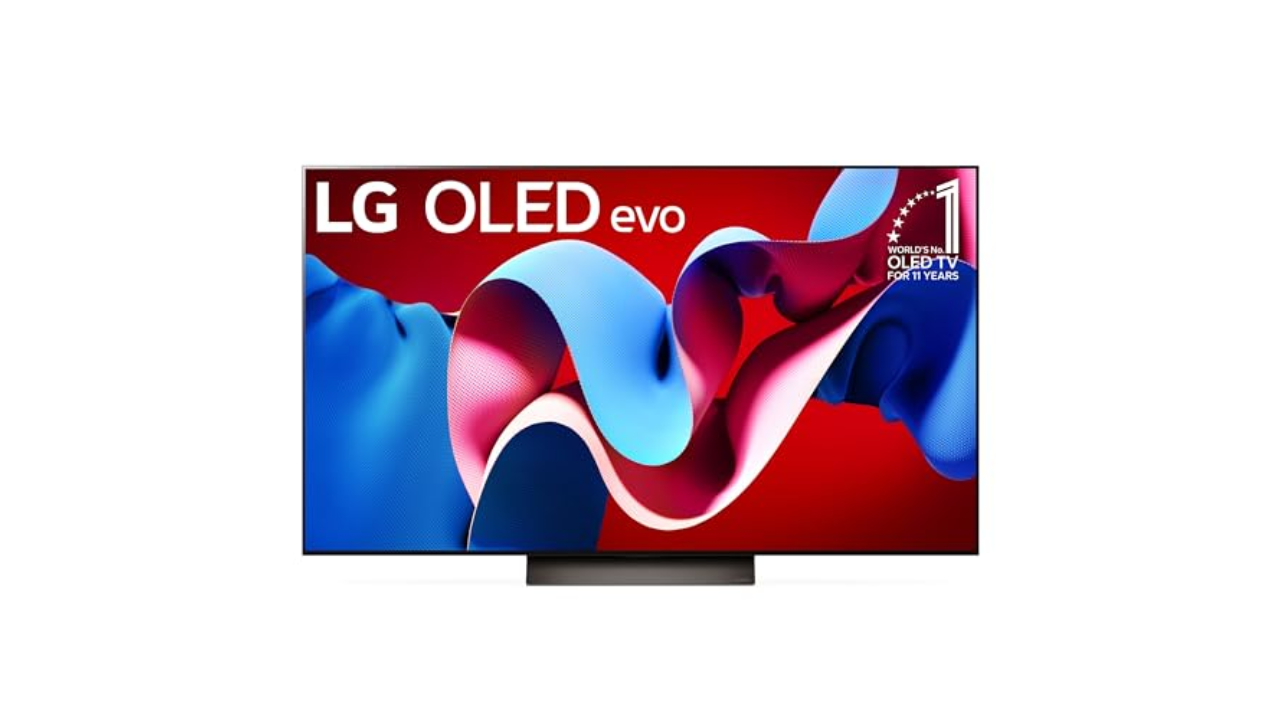
You must be logged in to post a comment Login